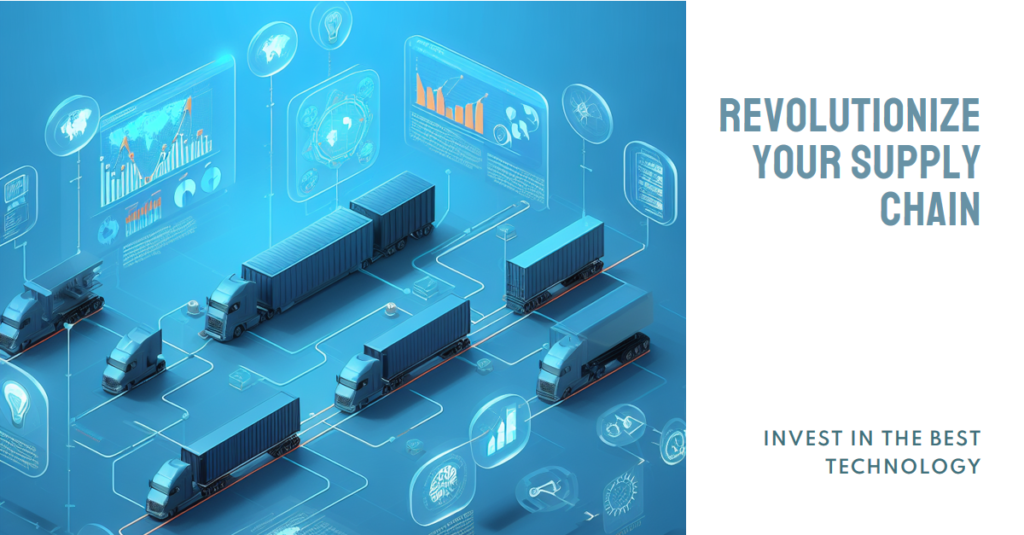
Supply chain management has become increasingly vital in today’s dynamic business landscape. Companies face the challenges of intricate global networks, fluctuating demand, and constant threats of disruptions. In this context, supply chain analytics emerges as a beacon of light, offering actionable insights to navigate these complexities effectively.
1. Understanding Supply Chain Analytics
Supply chain analytics involves leveraging data to analyze and optimize the performance of a supply chain. This powerful tool enables organizations to make informed decisions, enhance efficiency, and reduce costs. By amalgamating data from various sources, including applications, infrastructure, third-party entities, and emerging technologies, supply chain analytics provides valuable insights into a supply chain’s performance.
2. Types of Supply Chain Analytics
- Descriptive Analytics: Examining historical data to understand past events.
- Diagnostic analytics: Determining the reasons behind previous occurrences.
- Predictive Analytics: Forecasting future events based on historical data.
- Prescriptive Analytics: Offering recommendations to optimize future outcomes.
3. Benefits of Supply Chain Analytics for Businesses
– Improved Efficiency and Productivity
Supply chain analytics aids businesses in optimizing operations, reducing waste, and improving overall productivity. Analyzing data on inventory levels, production schedules, and transportation routes enables businesses to streamline processes and identify areas for cost reduction.
– Enhanced Visibility and Control
Real-time visibility into supply chain operations allows businesses to track shipments, monitor inventory levels, and identify potential disruptions proactively. Armed with this information, businesses can make informed decisions to mitigate risks effectively.
– Increased Accuracy and Reduced Errors
Through data analysis of demand patterns, production schedules, and transportation routes, supply chain analytics improves forecast accuracy, minimizes errors in inventory management, and reduces the risk of stockouts.
– Better Decision-Making and Risk Management
Supply chain analytics equips businesses with the necessary data to make informed decisions and manage risks effectively. Analyzing data on supplier performance, transportation costs, and inventory levels enables proactive risk mitigation.
– Competitive Advantage
Leveraging supply chain analytics provides businesses with a competitive edge by optimizing operations, reducing costs, and enhancing customer satisfaction. Making data-driven decisions helps businesses stay ahead of the competition and meet evolving customer needs.
4. Facts and Figures
The global supply chain analytics market is expected to grow from ₹293.4 billion in 2020 to ₹717.2 billion by 2025, with a Compound Annual Growth Rate (CAGR) of 19.8%. Key players dominating the market include IBM, SAP, Oracle, and SAS Institute. A staggering 79% of companies plan to invest in supply chain analytics in the next two years. Remarkably, companies report savings of up to 10% of their total logistics costs through supply chain analytics.

5. Choosing the Right Technology for Supply Chain Analytics
When selecting technology for supply chain analytics, businesses should consider factors such as scalability, ease of use, and integration with existing systems. Popular technologies include Circuit for Teams, SAP Supply Chain Management, and Oracle Supply Chain Management. Case studies highlight successful implementations by industry giants like Coca-Cola and Walmart, showcasing the power of predictive analytics in optimizing production and distribution processes.
6. Conclusion
In conclusion, supply chain analytics emerges as a powerful tool to optimize operations, reduce costs, and enhance customer satisfaction. The choice of technology investment is crucial, considering factors like scalability and integration with existing systems. At Satguru Road Lines, we are committed to providing top-notch logistics solutions, including supply chain analytics. Contact us today to learn more about optimizing your supply chain operations.
Also Read :-
Blockchain technology has the potential to significantly enhance supply chains through increased product traceability, quicker and more economical product delivery, better partner coordination, and easier financing access. Download the Noa app for Android or iPhone to hear more.
The Top 7 Supply Chain Innovations & Trends in Technology
- The World Wide Web.
- Synthetic intelligence.
- Smarter Data with Augmentation.
- Automation of Warehouses.
- Automation.
- Delivery by Last Mile.
- Applying Software for Supply Chain Management.
6 Technology Improves the Efficiency of the Supply Chain
- Self-driving cars.
- Improving Delivery Paths.
- Automation of processes with AI.
- Manufacturing Additive.
- Robots in Warehouses.
- A safer and more effective supply chain.
Which cutting-edge technologies are used in supply chain management? Supply chain management is utilizing cutting-edge technologies such as blockchain, robotics, digital twins, AI and advanced analytics, sensor-enabled IoT, automated workflows, and composable software solutions.
